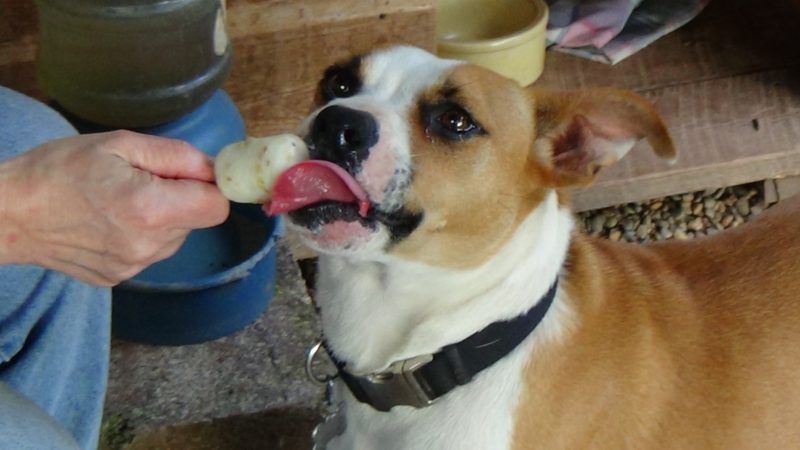

When we treat our furkid companions as family members instead of livestock it’s easy to spoil them with dog treats and toys. Sometimes they can become so accustomed to getting treats that they become demanding. This can be a disruption to training and an aggravation in your home-life. Usually it’s more of a hopeful anticipation – which is not an undesired behavior.
Dog Treats and Proper Diet
The impact of dog treats on a dog’s diet is similar to handing out sweets to a child: if done indiscriminately it can have a seriously adverse effect on their health and well-being. Choose wisely when selecting treats.
Many dogs have been harmed or killed in recent years by treats that contain fillers like melamine that are poisonous or salmonella because of poor sanitation of the manufacturing equipment. By and large these are manufactured in China, so be very suspicious of any dog treats made in China even if distributed by an American company.
Being American-made is still not a guarantee of quality. Some manufacturers still source materials from China – or have their product made there under contract and fail to disclose that fact. Do some homework and find manufacturers that are trusted.
Even when we find reliable sources, we must be careful not to over indulge our babies with dog treats. Treats are just that: treats. They should be given sparingly and with purpose, not dispensed every time your dog gives you his or her sad-eyes look. Remember who is training who here!
Treats tend to be higher in calories and fat than their regular food, so don’t over-indulge in them.
Times to Consider Giving Dog Treats[1]
- As a reward when training
- When you put him in crate for the day or for the night
- When you are leaving for the day
- After his evening meal
When Not to Give Dog Treats
- Do not use treats as a bribe against bad behavior
- Do not give treats to comfort a sick dog: they make it worse
- Use treats very sparingly with an obese dog
Dog treats can be very useful in training, but use small treats made for this purpose so you can be generous with your praise, and give them only when the desired behavior is performed, not as bribes to try harder. The dog does not understand this; he only knows you gave him a treat for what he did and will repeat that behavior to get another treat.
Treats and Training
Using treats as a tool in positive reinforcement training can be very helpful once a dog has had some base-line training. The initial stage of training any dog or puppy is to teach them the proper attitude for training.
At Piney Mountain Foster Care we work almost exclusively with adult dogs. Many have had little or no training and can be quite excitable and unruly. I find that using any kind of treat for teaching a dog to be calm generally backfires. Once the dog becomes aware that I have food on my person, they will seek to get that food any way they can. Therefore I use vocal and physical praise for this first step. The dog may not understand what “good boy!” means, but the tone of my voice and my emotional state conveys that clearly. I back that up by petting him or scratching his ears. Once he learns this basic premise of a training session I can advance to using treats for rewards.
Even then, keep the treats out of sight in a pouch or bag – preferably a leather or cloth bag that does not crackle like cellophane does. The dog comes to associate the crackling with the treat and this confuses the issue of why she’s getting a treat.
Let the dog see and/or smell the treat (he can smell most treats from 20 feet or more, no need to put it under his nose), get his attention, give the command. As soon as the dog complies, give him the treat and praise him.
Appropriate Toys
Toys can be useful in keeping your dog(s) occupied when you are not training or able to play with them. Choosing toys is also a tricky task. Most toys are not made to be consumed. The exception would be durable treats like sturdy bones and hooves. These can last for days or weeks even with large powerful dogs.
Most toys are made of synthetic materials not intended to be ingested. To choose a toy that is appropriate for your dog, you must consider your dog’s size and strength. I have yet to find an “indestructible” dog toy. Toys that are made of rubber or plastic can be harmful to your dog if bits of it are swallowed.
Cotton rope toys are safe if swallowed, can be chewed on and offer an interactive aspect by allowing two dogs, or your dog and you, to play together. Some dogs can be quite creative with a rope toy.
Plush toys can be treasured by some dogs, or very short lived with others. Selecting a toy made for dogs reduces the potential for poisoning the dog if he tears it open and eats part of it.
A ball, such as a tennis ball, is a classic toy that can be chewed on, used in self play or interactive play like fetch. Again, selecting a quality toy made from non-toxic materials is best; especially if you’re not sure how your dog will choose to enjoy the new toy. Some see everything as potential food.
Toys and treats can serve to enrich your dog’s life as long as you are careful in selecting them and employ sensible precautions in dispensing them.
More Info on Dog Treats & Toys
- http://www.professorshouse.com/Pets/Dogs/Feeding/Articles/Giving-a-Dog-Treats/#sthash.JRbdn97z.dpuf
- http://www.cesarsway.com/dog-care/dog-nutrition/How-and-When-to-Give-Healthy-Dog-Treats
- http://www.hillspet.com/dog-care/choosing-dog-toys-adult.html
- http://www.dog.com/dog-articles/choosing-the-right-dog-toy/2067/
| If you enjoy our updates, Doggy Tales, and educational articles consider subscribing for notices when new pieces are posted. It’s painless and you can unsubscribe any time you want. Your e-mail address is used ONLY to deliver these notices. | [email-subscribers namefield=”YES” desc=”” group=”Public”] |



